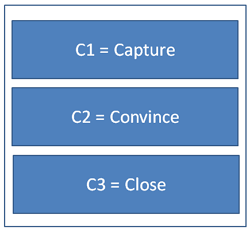Using the Three Cs Formula to engage your subscribers
 The delete key is only seconds away, so how do you structure an email to avoid being deleted?
The delete key is only seconds away, so how do you structure an email to avoid being deleted?
Eventbrite asked me to deliver email copywriting tips at the London Brite Space event, to help event marketers avoid the delete key and aid conversion.
As the copy tips are relevant to more than just event invitation emails and went down so well I thought I’d share them and slides here.
Stand in the readers shoes
Start by thinking from the readers’ perspective. The reader has simple questions:
- 1. What’s this email about?
- 2. Why should I care, what’s in it for me?
- 3. What action should I take?
Your job is to answer these questions – and quickly. Making sure the tone and voice is all about what the reader wants and not what you want. A simple check is to count the number of you’s vs number of we’s. There should be twice as many you’s as we’s.
Remember that whilst the ultimate objective is to convert to purchase, the email conversion objective is to get the click to a landing page. It’s on the landing page that the sale conversion takes place.
Three C’s formula
The simple formula for an effective email is to follow with three logical blocks of content; Capture, Convince, Close. The slides below show example emails with these three logical areas annotated.
1. Capture
The first part of the email is all about capturing the attention of the reader. This part of the design and copy is short and needs to, in under three seconds, buy you 15 more seconds of the reader's time to continue into the convince part of the email.
The capture section of the email consists of the subject line, top banner, headline and the first line or two of body copy.
- If you’ve a high profile person at your event that your target audience will know then use their name in the subject line. Slide 6 shows an example of this 'Optimization tips from Bryan Eisenberg, Tim Ash + more'
- Use a question in the subject line to make the reader curious. This creates an open loop thought. Avoid asking a closed question that the reader can simply answer with a ‘yes’ or ‘no’. Rather ask question that they can’t answer, with the implication they can find the answer by opening the email. Slide 7 uses 'Who will you meet at the Festival of Marketing?', you have to open the email to find the answer.
- Provide a simple value proposition for attending your event. Slide 6 example uses two simple words in the headline 'Convert Better'. This is the number one thing that all potential attendees to the particular conference are wanting.
2. Convince
Once attention is captured you’ve 15 more seconds to convince the reader they should take further action.
- Use short sentences and paragraphs of no more than three or four lines. Be very specific about the benefits of attending. Bullet with benefits are a great way to get the key points across. Readers naturally scan bullet information.
- Exactly what is going to be covered at the event, what will attendees learn? Be specific. Slide 6 example talks about '16 psychological triggers' and 'four key factors', this gives the reader clarity about what topics will be discussed.
- The example in slide 7 uses crushing social proof to convince, with a very long list of brands and impressive job titles of people already booked to attend. The implication for the reader is clear; to avoid falling behind their competitors and peers they need to be there.
3. Close
The final content block is about the call to action. Never end an email without this. In most cases the call to action is about a click, but you might also have alternatives, such as replying or a phone number to call. In the close it’s necessary to overcome the barriers to in-action. What objections to action could the reader have and how can you overcome these?
- Urgency is a big driver of action. Most people will put off a decision until tomorrow given the chance. But tomorrow often never comes. Slide 6 email example uses an offer period and end date whereas slide 9 has notes that 'all tickets went within an hour for London…' Letting people know of a scarce resource with implication they need to act now, or miss out, is a great tactic.
- Don’t ask for too much in the call to action, but rather focus on the next step the reader must take in the conversion funnel. This could be to view full agenda, see price options, check full session agenda. A call to action of buy is fine, but only if the reader is likely to already be thinking about buying. Otherwise you might be moving too fast.
- Repeat the call to action. Whilst all emails must end with a call to action, give the option for readers to click in the capture and convince parts of the email too. Some readers will be ready to move to the landing page sooner than others. Use buttons and linked text, varying the exact call to action each time.
Take a look at the slides to see the examples and for more inspiration on subject lines read this article for lessons from 9 subject line A/B split tests.
[slideshare id=40338493&doc=emailconversiontipsandtricks-141016030432-conversion-gate01]



 The delete key is only seconds away, so how do you structure an email to avoid being deleted?
The delete key is only seconds away, so how do you structure an email to avoid being deleted?


